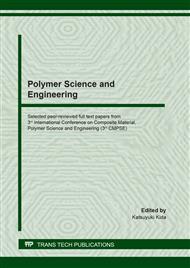[1]
Etherington BA. (1983). Interlocking cement and concrete components for low cost house construction: The building together experience in Thailand. Proceedings of the Symposium on Appropriate Building Materials for Low-cost Housing, Nairobi, 236–243.
Google Scholar
[2]
Civil Engineering (n.d.) Cement Mortar. Retrieved from http://www.civilengineeringx. com/construction/uses-of-cement-mortar/ on 7 May (2018).
Google Scholar
[3]
UN Ali, NM Nor, MA Yusuf, M Othman, MA Yahya (2018). Application of water flowing PVC pipe and EPS foam bead as insulation for wall panel. AIP Conference Proceedings 1930 (1), 02001.
DOI: 10.1063/1.5022905
Google Scholar
[4]
UN Ali, NM Daud, NM Nor, MA Yusuf, M Othman, MA Yahya (2018). Enhancement in Green Building Technology as to Sustainable Development in Malaysia. The Social Sciences 13 (1), 160-166.
Google Scholar
[5]
N Mohamad Nor, MA Mohd Noor, MA Yusof, AMA Zaidi, S Abdullah (2013). Retrofitting Options for Un-Reinforced Brick Wall Subjected to Impact Load. Advanced Materials Research 602, 1574-1578.
DOI: 10.4028/www.scientific.net/amr.602-604.1574
Google Scholar
[6]
NM Daud, NM Nor (2018). Challenges and Technologies for Affordable Housing System. International Journal of Academic Research in Business and Social Sciences 8.
DOI: 10.6007/ijarbss/v8-i6/4306
Google Scholar
[7]
NM Daud, NM Nor, UN Ali, MA Yusof, V Munikanan (2017). Affordable Housing System: A Review on Issue of Housing Affordability. The Social Sciences 12 (7), 1281-1287.
Google Scholar
[8]
McKusick, M. (1997). Discovering Late Erector 1963-1988, Ashton Press, Iowa City.
Google Scholar
[9]
MYIB (2017). Interlocking Brick benefits. Retrieved November 3, 2017, from http://www.myib.com.my/brick4.html.
Google Scholar
[10]
Gazzola EA & Drysdale RG. (1989). Strength and deformation properties of dry-stacked surface bonded low density block masonry. Proceedings of the 5th Canadian Masonry Symposium, Vancouver 5-7 Vol. 5, p.609–618.
Google Scholar
[11]
Haener. (1984). Stacking mortarless block system. In Engineering Design Manual, Atkinson Engineering, Inc., Hamilton, Ontario, (1984).
Google Scholar
[12]
Cinder & Concrete Block Corporation (2001). Allowable stress design of concrete masonry lintels, York Building Products Co., Inc, York, USA.
Google Scholar
[13]
Emad H. (2013). Flextural Behavior of Steel Reinforced Brick Beam Utilizing Interlocking Brick System, Universiti Teknologi Malaysia.
Google Scholar
[14]
Norazman Mohamad Nor, Mohd Hanif Ahmad Boestamam, Mohammed Alias Yusof (2013). Carbon Fiber Reinforced Polymer (CFRP) as Reinforcement for Concrete Beam. International Journal of Emerging Technology and Advanced Engineering, 3( 2),6-10.
Google Scholar
[15]
NM Nor, MAA Ghazali, MZ Ahmad, MA Yusof, M Vikneswaran, MA Yahya (2017). Revisiting high strength concrete using common admixtures. Journal of Fundamental and Applied Sciences 9 (3S), 546-554.
DOI: 10.4314/jfas.v9i3s.42
Google Scholar


